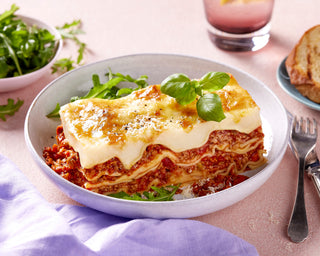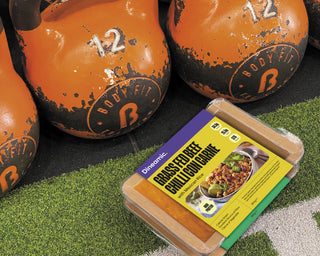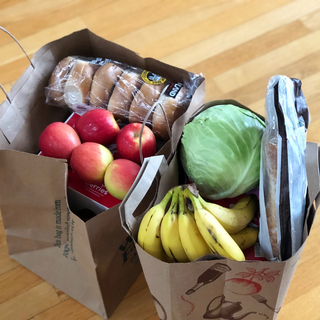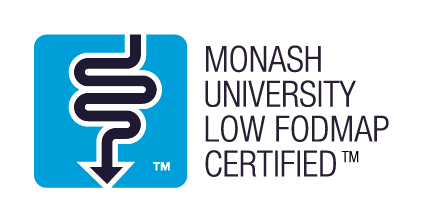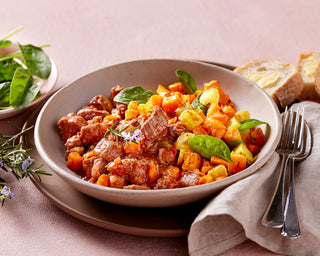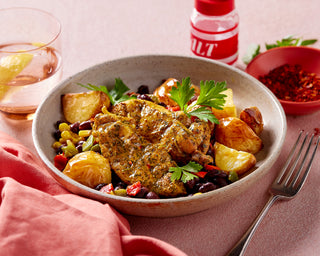
So you’ve decided enough is enough. Well, kudos to you for taking the first step to reducing your food waste! It’s hard to believe Australians throw one in five shopping bags of food in the bin - the equivalent of about $3,800 worth of groceries per household over the course of a year. Some serious food for thought.
What’s more devastating is the impact this behaviour is having on our planet. One-third (1.3 billion tonnes globally) of our food ends up as waste. This food waste contributes to greenhouse gas emissions, the deforestation of millions of hectares and the overuse of scarcely available freshwater.
While the problem may seem overwhelming, there are small (but impactful) changes you can make to reduce your food waste. We can win this battle - it just takes some change and a little getting used to. Read on for our top ten tips for reducing your food waste.
1. USE A SHOPPING LIST
Ever come home with a carton of milk to find you already had two in the fridge? Or maybe you’ve bought a bag of apples to later discover a dozen hiding in the crisper.
Well, it might seem like a no-brainer but making a shopping list (and taking a peak in the fridge, freezer and pantry) before you leave home can go a long way to ensuring you only buy what you need. No more impulse purchases!
2. STORE FOOD BETTER
There’s a bunch of storage whizzes out there with fridges and pantries better organised than the ones in an IKEA catalogue, and many of us have a lesson to learn from them! Correctly storing our food can add days, weeks or even months to its life.
Dry goods should be in airtight containers. Figure out which fruits and vegetables are best in or out of the fridge and use your freezer where needed. For example, bananas are best at room temperature, apples are best kept in the fridge, and avocados are best on the counter until ripe before moving to the fridge if not eaten.
3. LOVING LEFTOVERS
Leftovers, some people love them…others not so much. A large amount of food waste is a result of large meals. We save a bit of money prepping in bulk, but if it ends up neglected in the back of the fridge and then in the bin, then we weren't really saving anything.
If this is you, try freezing leftovers in individual portions and defrosting them when you’re in the mood for the same meal again.
4. UNDERSTANDING ‘USE-BY’ AND ‘BEST-BEFORE’
This may come as a surprise to some, but ‘use-by’ and ‘best-before’ ARE in fact different things. Best-before is to indicate food quality, whereas use-by is a measure for food safety.
There’s a use for many items that may be past their best-before, but are still perfectly edible. Take for example stale bread. Perfect for turning into breadcrumbs! Use your senses - smell, sight and taste - to determine if something is really ready to become waste.
5. GROW SOME HERBS
COVID-19 lockdowns have encouraged a number of us to pull up our sleeves, get our hands dirty and get to work in our gardens. Growing your own herbs is a rewarding and wholesome activity.
How many times have you purchased a bunch of herbs just for the majority of it to end up in the bin? Rosemary, mint, basil and parsley are a few you can start with - they’re versatile and great for so many meals!
6. COMPOST
Composting is great, but remember it’s NOT the priority. Many people will buy more than they need, or justify replacing perfectly good fruits and vegetables with fresher ones because they compost.
Your top priority should be to reduce the waste you create. Composting is a better alternative to landfill, but it won’t help reduce the unnecessary greenhouse gas emissions, deforestation and use of freshwater that went into producing that food in the first place.
7. AVOID CLUTTER
This one’s pretty straightforward, but if your fridge is bursting at the seams, it’s only a matter of time before a bunch of its contents end up in the trash.
If your fridge, pantry and freezer are less cluttered you’ll be able to more easily see what you have available, and make use of items before they end up as landfill. You might like to also try storing food in clear containers - it’s easier to see what you have on hand when cooking or before you hit the grocery store.
8. TAKE NOTE OF WHAT YOU THROW AWAY
Sometimes what we need to make smarter decisions (or inspire others to) is to realise the trends in our wasteful habits. Try keeping a log of what you throw out and using this to identify trends in what you may be regularly wasting.
If this still doesn’t work - and you’ve got a few in the household who aren’t yet on the food waste team - then put a dollar value next to every item you throw away. This might be the wake-up call they need!
9. FIRST IN, FIRST OUT
It’s the first rule you’ll learn if you step foot in any commercial kitchen across the globe. ‘FIFO’ ensures when you unpack any new groceries you move the oldest products to the front and put the new products in the back.
Using this method, you’re more likely to use older products and produce before they expire. One of the exceptions to this rule, of course, is letting your bananas over ripen. That way you can bake delicious healthy banana bread!
10. BUY READY-MADE MEALS!
Okay, maybe we’re a bit biased, but ready-made meals are a great way to eat what you need and ensure nothing goes to waste.
Why our meals? Well, our meals for one come in HaloPack recyclable eco packaging, using 92% less plastic than our other ready-made meal trays. Our mains for two are also portioned to perfection, utilising fresh, local Aussie produce to reduce our environmental footprint.
That gives our customers a more convenient way to enjoy better food, better health, and a better environment.
WHAT ARE YOUR FOOD WASTE TIPS?
Let us know in the comments below or tag us on Instagram or Facebook!


